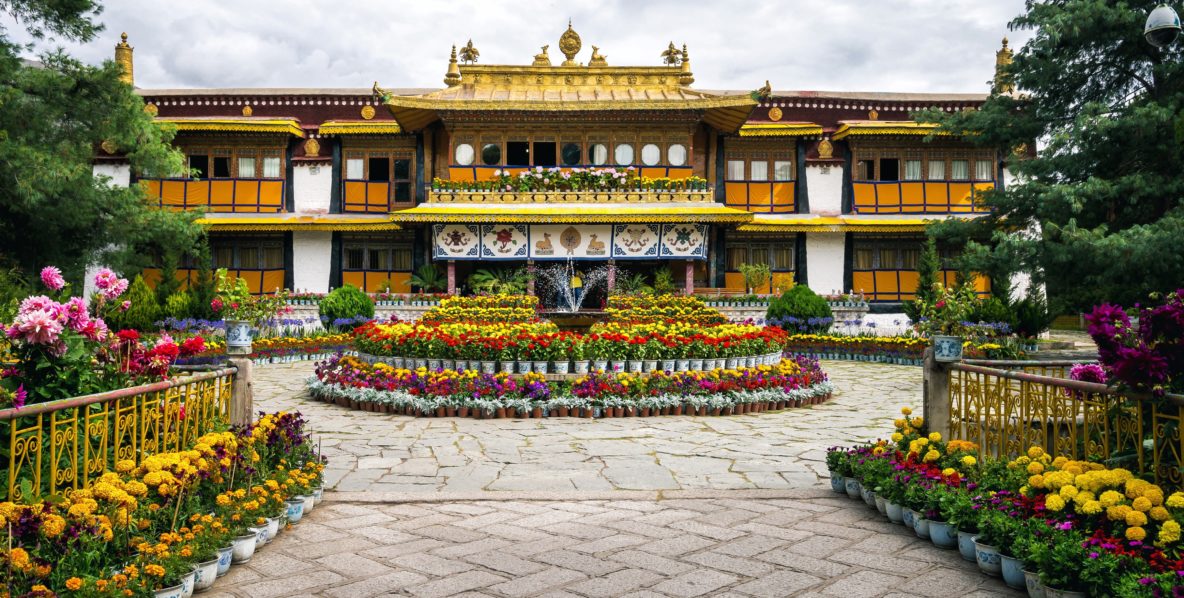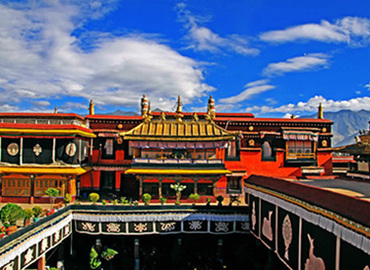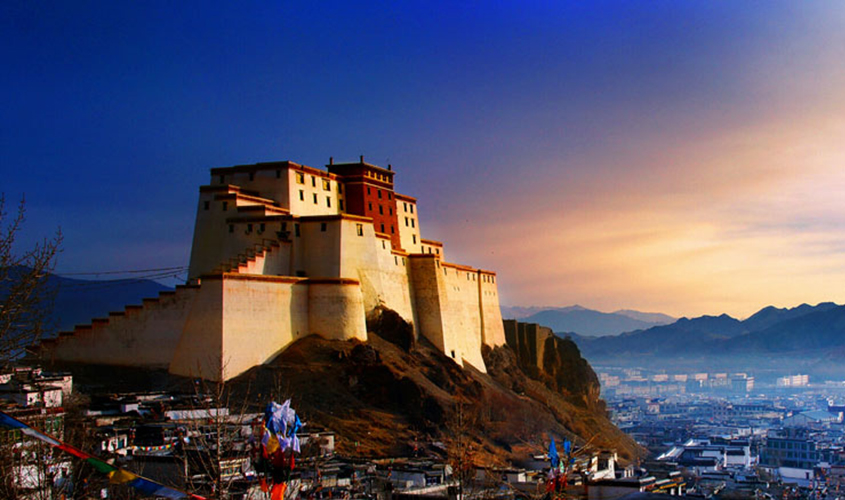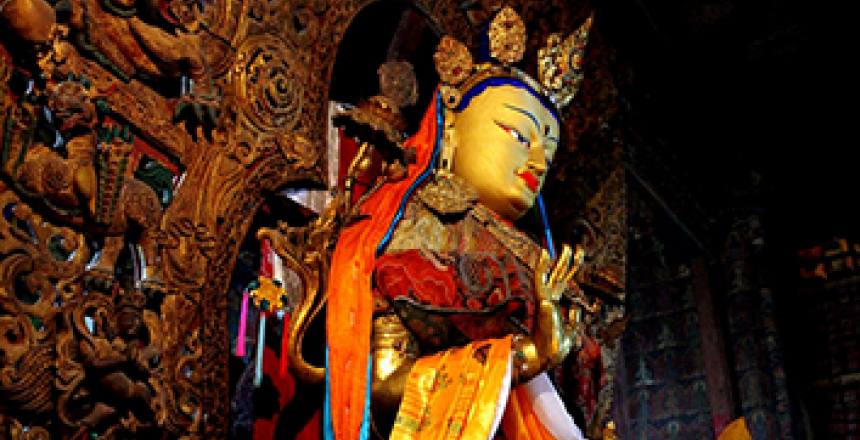World Heritage Sites of Tibet
WORLD HERITAGE SITES OF TIBET
There are three UNESCO World Heritage Sites (WHS) in the cultural category in the Tiber. Three of which are found in Lhasa. Most of the places listed in the WHS were revered for thousands of years and there has been a series of contributions and renovations in the form of construction of temples, stupas, and places over the centuries by different rulers and Dali Lama.
Norbulingka Summer Palace
 Norbulingka Summer Palace Norbulingka (Luobulinka in Chinese) means Treasure or Jeweled Park in Tibetan. It is at the western edge of Lhasa at the bank of River Kyichu. Listed by UNESCO as a World Cultural Heritage Site in 2001, Norbulingka reflects the religious and ethnic aspects of the Tibetan, Han Chinese, and other tribes with its impressive architecture.
Norbulingka Summer Palace Norbulingka (Luobulinka in Chinese) means Treasure or Jeweled Park in Tibetan. It is at the western edge of Lhasa at the bank of River Kyichu. Listed by UNESCO as a World Cultural Heritage Site in 2001, Norbulingka reflects the religious and ethnic aspects of the Tibetan, Han Chinese, and other tribes with its impressive architecture.
History of Norbulingka
The Imperial Minister of the Qing Dynasty ordered for a Pavilion Palace to be built for the Dalai Lama as a summer retreat.
Later in 1751, a three-floor palace named Kelsang Potrang inside Norbulingka itself was added by the 7th Dalai Lama which consisted of the Buddha hall, an assembly hall, a reading room, a god temple, and a bedroom. The 8th Dalai Lama made additions to Norbulingka in the form of palaces such as the Dragon King Temple, the Lake Heart Palace, and Han-style pavilion and gardens. Up until the 14th Dalai Lama, Norbulingka had seen many extensions, and now is a complex with many palaces, flower gardens, and lakes.
Palaces of Norbulingka
Norbulingka has five distinct sections: Kelsang Palace, Tsokyil Palace, Golden Linka, Takten Migyur Palace, and Lake Heart Palace. Each palace has three main sections: the palace area, the forest area, and the area in front of the palace. (Note: the Tibetan word for “Palace” is “Potrang”.)
Kelsang Palace
This palace was built by the 7th Dalai Lama in typical Tibetan style and consists of worship rooms, reading rooms, and bedrooms. The main hall features the throne of the 7th Dalai Lama amidst statues of Guanyin Bodhisattva and Longevity Buddha.
Tsokyil Palace
It lies to the northwest of Kelsang Palace in the midst of the lake and is the most attractive pavilion built by the 8th Dalai Lama.
Golden Linka and Chensel Palace
To the northwest of Kelsang Phodrong lies also the Chensel Palace and on the west side of Norbulingka is the Golden Phodron. Both these were built in 1922 by a benefactor for the 13th Dalai Lama.
Lake Heart Palace
The most beautiful area in southwest Norbulingka, the Lake Heart Palace was built by the 8th Dalai Lama to hold parties with dignitaries.
Takten Migyur Palace
Completed by 1956, Takten Migyur Palace was built by the 14th Dalai Lama and is also referred to as the New Summer Palace. More magnificent and larger than the other palaces, the New Palace features exquisite murals of Sakyamuni and his eight contemplative disciples, and also those related to the development of Tibet.
Jokhang Temple
 History of Jokhang Temple
History of Jokhang Temple
Jokhang Temple was founded in 647 by King Songtsen Gampo (r.617-49), the first ruler of a unified Tibet, and his two foreign wives who are credited with bringing Buddhism to Tibet. The temple has been regularly expanded over the years, including extensive reconstruction under the fifth Dalai Lama in the 17th century. Remarkably, however, the core of the temple is still original from the 7th century.
Since the Chinese occupation in 1951, Jokhang Temple has taken on a political role as the focus of Tibetan cultural identity and resistance. During the Cultural Revolution (1966-76), part of the Jokhang was used as a pigsty while another section housed Chinese soldiers, who spent days burning the temple's ancient Tibetan scriptures.
Today, Jokhang Temple is open to pilgrims and tourists but carefully controlled by the Chinese government. Only 100 monks can occupy the temple at any time and the area is reportedly monitored by hundreds of police. For this reason, it is generally not safe for monks to speak to foreign visitors.
Legends Surrounding the Jokhang Temple
There are various legends surrounding the establishment of the Jokhang Temple. One legend states that Queen Bhrikuti established the temple to contain the statue, while Queen Wengcheng picked the location according to the teachings of astrology and geomancy divination. Lake Wothang was believed to be the center of demonic forces and only a grand temple on the spot would drive away the evils preventing the spread of Buddhism in Tibet.
According to another legend, the King tossed his ring into the air for the spirits to indicate where he should construct the temple. Upon falling into a lake, a stupa surfaced from the water. The temple site at the lake was filled with sand carried by a thousand goats from a mountain far away, thus giving it its first name, Rasa (‘ra’ is goat and ‘sa’ is earth in Tibetan).
Architectural Highlights
The outside of the temple is adorned with the early representations of Buddhism such as deer and wheel motifs, while the interior presents a maze of chapels devoted to different gods and bodhisattvas and a significant collection of cultural artifacts surrounded by candles and incense. The holiest object in Tibet, a life size statue of Jowo Shakyamuni adorned with jewels, is the heart of the Jokhang Temple.
Pilgrimage
Jokhang Temple is a very important pilgrimage destination for Tibetan Buddhists. Pilgrims come from all corners of Tibet, usually on foot and often performing austerities for penance along the way. The most devout pilgrims cover the last several miles prostrate on the ground. More prostrations are undertaken in the plaza in front of the temple. Before entering, most pilgrims circumambulate the temple on the Barkhor, a sacred path that is also lined with market stalls selling yak butter and jewelry.
Inside the temple, pilgrims make their way gradually to the central shrine, often crawling on their hands and knees or prostrate on their bellies. They hum prayers while also spinning prayer wheels, and bring offerings (typically white scarves and yak butter for the votive candles) to the many chapels that ring the shrine. Finally, they pray before the sacred image of the Jowo Shakyamuni.
Potala Palace
 “Potala” itself comes from the Hindi name of a mountain in Southern India, while in Sanskrit it means, “The Abode of the Buddha.” Construction of the palace began in 1643 and was completed (the white part of the building) in 1694 under the reign of the 5th Dalai Lama.
“Potala” itself comes from the Hindi name of a mountain in Southern India, while in Sanskrit it means, “The Abode of the Buddha.” Construction of the palace began in 1643 and was completed (the white part of the building) in 1694 under the reign of the 5th Dalai Lama.
The Potala was home to each successive Dalai Lama, until the construction of Norbulingka Summer Palace in the late 18th century (also one of Lhasa’s three UNESCO sites), at which point the Potala became their primary winter residence.
Potala Palace rises from Red Mountain in the center of Lhasa Valley at an altitude of 3,700 meters. As the winter palace of the Dalai Lama from the 7th century CE, the complex symbolizes Tibetan Buddhism and its central role in the traditional administration of Tibet. The White Palace contains the main ceremonial hall with the throne of the Dalai Lama, and his private rooms and audience hall are on the uppermost level. The palace contains 698 murals, almost 10,000 painted scrolls, numerous sculptures, carpets, canopies, curtains, porcelain, jade, and fine objects of gold and silver, as well as a large collection of sutras and important historical documents. To the west and higher up the mountain, the Red Palace contains the gilded burial stupas of past Dalai Lamas. Further west is the private monastery of the Dalai Lama, the Namgyel Dratshang.
- We love to talk adventures, speak to one of our trekking experts now!
- +977 9841326314
.png)
